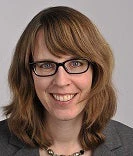How to deal with irregular migrants is not only discussed in the United States. Also low- and middle- income countries need to find answers to this question. Morocco launched a second regularization campaign last month. Although it is still primarily an emigration country, Morocco has increasingly become a transit and also an immigration country. Since the 2000s it has received an increasing number of migrants and refugees from sub-Saharan Africa, Syria, and Europe.
The first regularization campaign in 2014 allowed over 25,000 migrants to receive a one-year residence permit that may be renewed, including all of the women and children who applied. Migrants and refugees came from 116 countries, with Senegalese (25%), Syrians (20%) and Nigerians (9%) being the three top nationalities. Overall 27,330 migrants submitted their application. The 83 local commissions put in place had accepted over 65 percent of the applications. The national appeals commission increased the final rate of regularization to 92 percent. The regularization campaign was not only combined with a stronger fight against traffickers but also with raids on existing migrant camps.
The regularization campaigns are part of a wider overhaul of Moroccan immigration and asylum policies. The constitution of 2011 underlined the diversity of Morocco’s national identity. It included the principle of non-discrimination, the right to asylum and the equality of rights between nationals and foreigners. Based on a report by Morocco’s National Human Rights Council, in 2013 King Mohammed VI called for a revised asylum and immigration policy respecting the human rights and humanitarian needs of migrants. Three draft bills regarding immigration, asylum, and trafficking have been elaborated to replace the immigration law of 2003 (but have not been adopted so far). At the same time, Morocco is trying to promote the integration of those residing legally in Morocco, their access to the labor market, education, health services and housing. This is not an easy task. A recent survey among migrants from sub-Saharan Africa showed that the majority of migrants are not satisfied with their situation in Morocco, as their level of income is low compared to their education and the costs of migrating. Changing Morocco’s perception of itself as not only an emigration but also an immigration country will also take time.
Despite these challenges, the new policy represents a radical departure from the restrictive, security-based approach enacted since 2003. This is not merely a different response to the European Union’s interest to contain migration from Africa to the EU. A crucial factor driving the policy change is Morocco’s geopolitical orientation towards sub-Saharan Africa and its positioning as a regional leader. Morocco’s vibrant civil society, advocating for migrants rights, and criticizing abuses, discrimination and racism, also played a role.
Not only Morocco but also other countries in North Africa are confronted with increasing (irregular) immigration. It remains to be seen if Morocco will influence the revision of their immigration policies, as it happened in the 2000s.


Join the Conversation